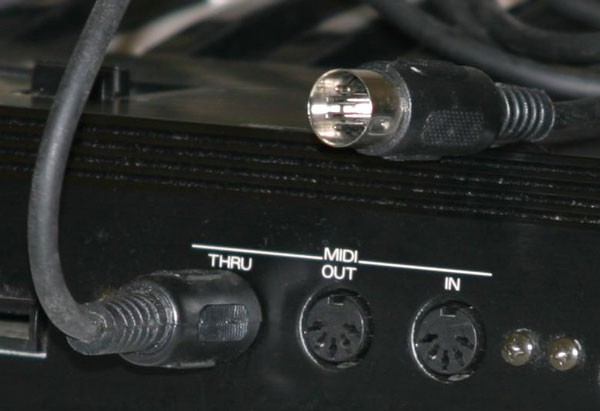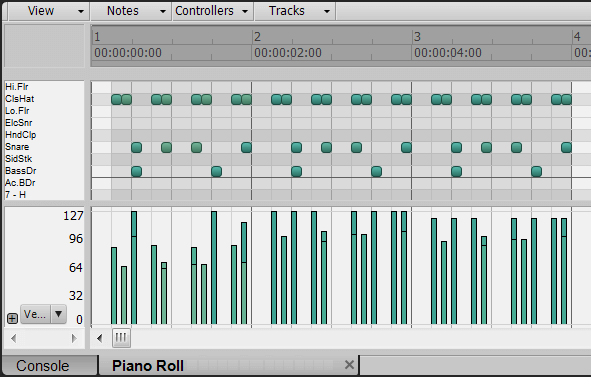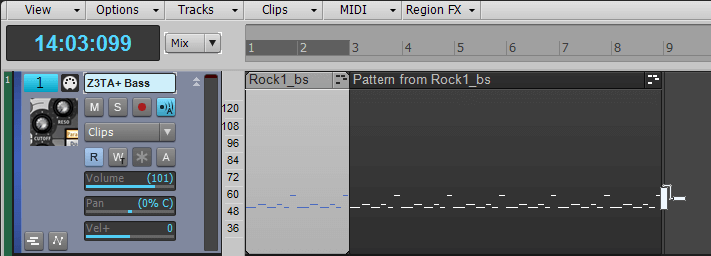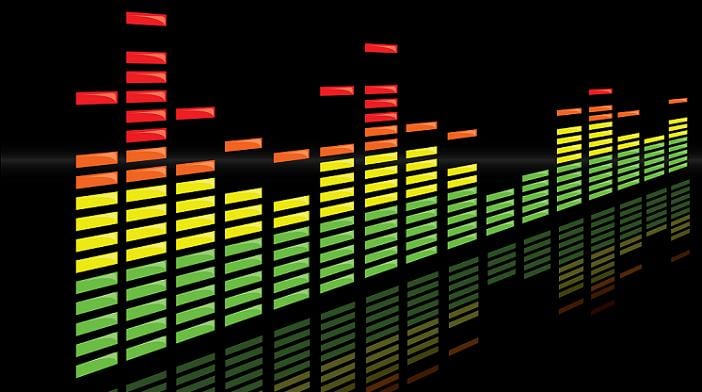 Image via accordo.it
Image via accordo.it
For the technologically inclined among us, MIDI has become an integral part of digital music. If you're counting it among the strongest tools in your box, check out these 20 can't-miss tips from Performer Magazine.
1. MIDI limiting
No hardware needed – add a constant value to MIDI velocities to create limiting (Fig. 1). After limiting, if needed, subtract a constant to set the ceiling.
 Fig. 1: the first measure is the original part, the second after limiting by adding a constant, the third with a ceiling set to 95 percent of maximum velocity (Image via performermag.com)
Fig. 1: the first measure is the original part, the second after limiting by adding a constant, the third with a ceiling set to 95 percent of maximum velocity (Image via performermag.com)
2. Sometimes DAWs beat MIDI
The MIDI resolution for some Vis may be low enough to create level control "stair stepping" (a lack of smoothness). A DAW's level of automation won't do that.
3. Bass likes space
Real bass players lift their fingers off strings to fret the next note, so don't butt note-offs up against note-ons – leave some space so the part breathes more.
4. MIDI FX for songwriting
Don't get hung up editing when creating – insert a quantization MIDI effect (Fig. 2) for temporary quantization. Deal with the details later.
 Fig. 2: Quantization MIDI FX set to 82 percent strength. (Image via performermag.com)
Fig. 2: Quantization MIDI FX set to 82 percent strength. (Image via performermag.com)
5. USB beats DIN
Connect a MIDI device to your computer via USB for faster operation than with an interface's five-pin DIN connector. But with Windows, beware the MIDI port limit.
6. Better humanization
Humans don't really randomize (unless they're drunk). Quantization strength "splits the difference" between metronomic precision and a part with more feel but shaky timing. Try 80 to 85 percent strength.
7. "Strum" your MIDI notes
If you don't have something like A|A|S Strum, give chords a guitar vibe by moving the lower notes a little ahead of the beat and the higher notes a little later.
8. Try layer cake
Copy a part, transpose it up or down an octave, then layer it with the original notes to thicken a sound.
9. The MIDI songstarter
It's easier to change transposition and tempo changes with MIDI than with audio – great for finding the right vocal range and a comfortable tempo.
10. Go to the library
Make a library of MIDI controller patterns – e.g., rhythmically chopped controller data, filter sweeps, fadeouts, fade-ins, etc. – then drag in as needed. Because they're MIDI data, they'll stretch to match tempo.
11. Transport your MIDI keyboard
Mapping DAW transport controls to MIDI keys is very convenient when doing overdubs. You don't really use the top four notes of your 88-note keyboard, right?
12. The jack of all trades
There's a footpedal jack on the back of your synthesizer – use it for more expressiveness.
13. Free the wheel
Vibrato? Bor-ing. Wiggle the pitch wheel with your fingers to create vibrato, which frees the mod wheel to control parameters like sub-octave, tone, morphing between waveforms, etc.
14. Let it slide
Slide note start times a little ahead or behind the beat to change the "feel" (e.g., sliding a snare slightly later gives a bigger sound; sliding a hi-hat forward drives a song more).
15. Paint your MIDI
With Cakewalk SONAR, use the MIDI Pattern tool (Fig. 3) to copy and paste entire sections easily.
 Fig. 3: The MIDI Pattern tool has "painted" the first two measures into six more measures. (Image via performermag.com)
Fig. 3: The MIDI Pattern tool has "painted" the first two measures into six more measures. (Image via performermag.com)
16. The audio/MIDI bridge
Melodyne can convert audio parts to MIDI pretty reliably. If you can hum a few bars, you really can fake it.
17. The percussionator
Not an action hero who plays timpani, but an arpeggiator set to trigger a soundset of percussion instruments mapped across the keys.
18. Jumble-aya
Edit the MIDI file that triggers REX file audio slices to create variations on loops and patterns.
19. Not all software is the same
Look for "special sauce" features in programs like MIDI plugins, de-glitch options, special tools, fit data to time, and other useful processes.
20. Try MIDI echo
MIDI echo fell out of favor because synths didn't have enough voices, but now they do: create interesting polyrhythmic echoes that would be hard to do with audio.
Next up:
- The Unspoken Rules of the Recording Studio: 5 Things Artists Should Never Do
- 4 Reasons Why All Musicians Should Know Basic Recording and Mixing Techniques
- How to Create Your Own DIY Recording Studio
- 6 Things I Wish I Knew Before Recording My First Album
- The 6 Most Important Things I Learned About DIY Recording From My Tiny Brooklyn Apartment
Craig Anderton is the Executive Vice President, Evangelist at Gibson. Prior to joining Gibson, Anderton was Editor in Chief of Harmony Central. In a long and distinguished career as musician, author, musicologist, and innovator, Anderton has played Carnegie Hall, published over two dozen books, and written thousands of articles.






